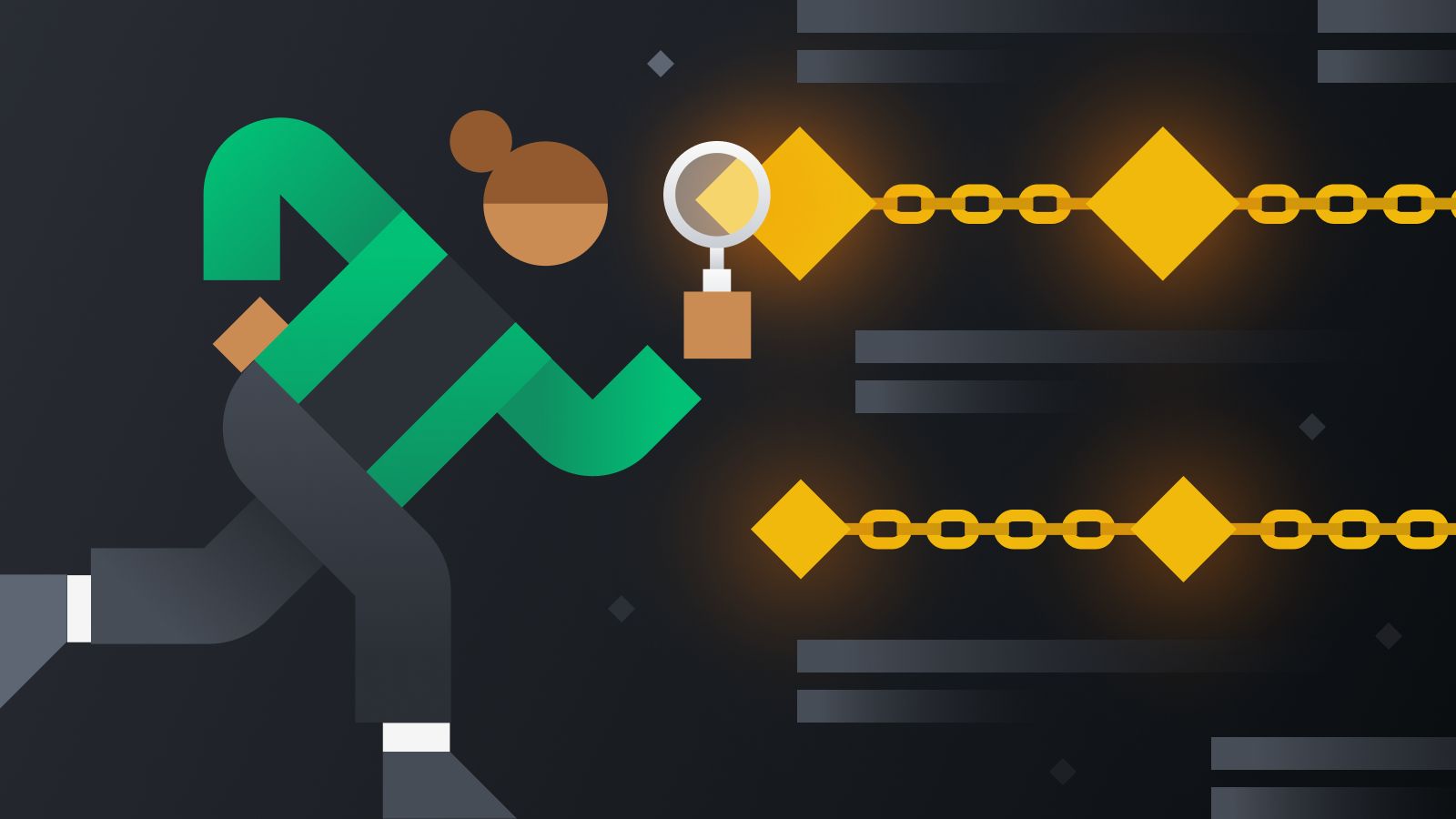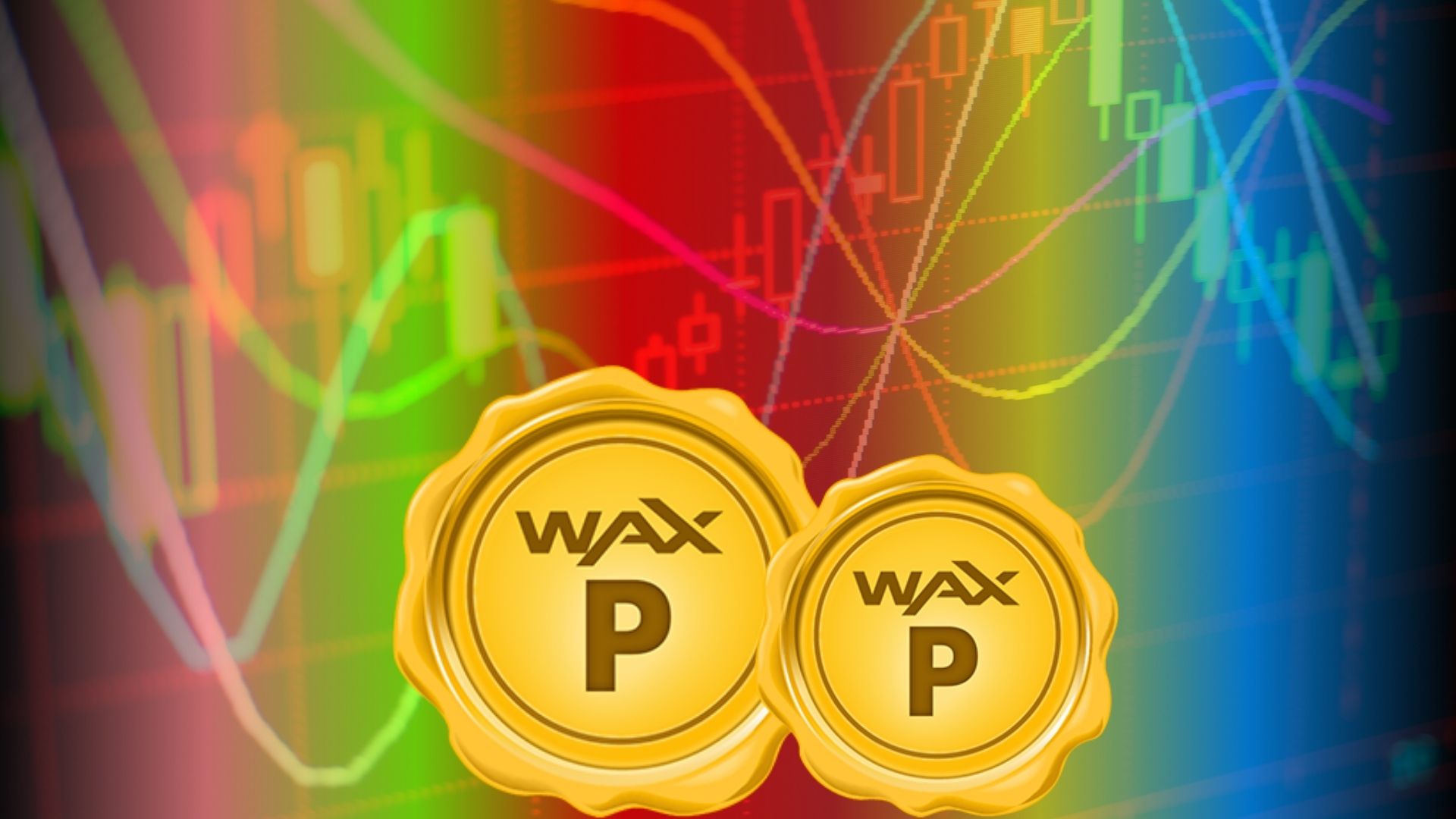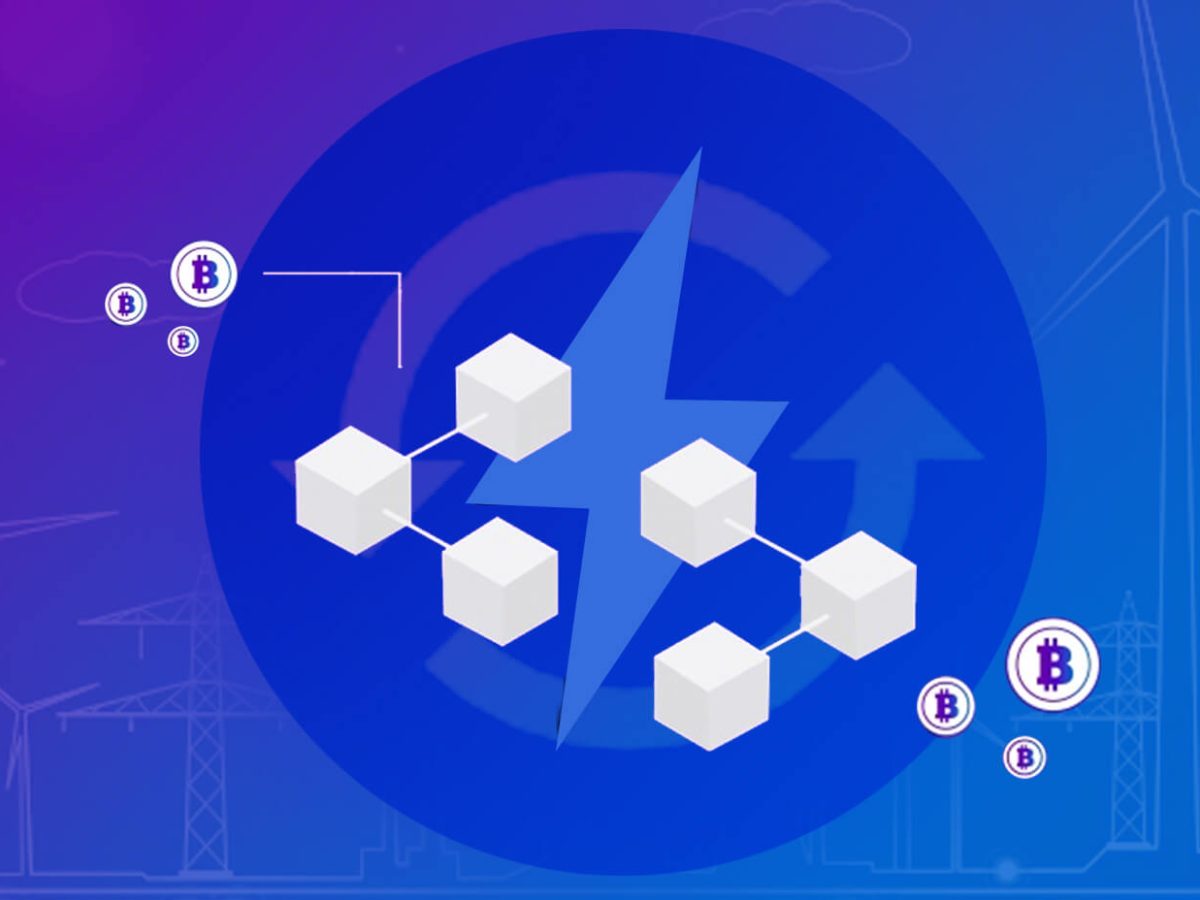What Is a Blockchain Explorer?
A blockchain explorer is a powerful tool that allows users to view and navigate through the contents of a blockchain. It acts as a search engine for the blockchain, providing access to all the data stored on it. Blockchain explorers are widely used in cryptocurrency networks, such as Bitcoin and Ethereum, to provide transparency and visibility into the transaction history.
At its core, a blockchain explorer serves as a digital archive that records every transaction and data stored on the blockchain. It provides a user-friendly interface that allows individuals to search for specific transactions, addresses, blocks, and other relevant information. This accessibility is crucial for users who want to track the movement of their funds or verify the authenticity of a transaction.
Blockchain explorers are designed to display information in a structured and intuitive manner. They organize data into different sections, such as transaction details, sender and receiver addresses, block confirmations, and transaction fees. This organization makes it easier for users to understand the flow of transactions and trace their origins or destinations.
One of the key features of a blockchain explorer is its ability to display real-time data. As new transactions are added to the blockchain, the explorer updates its database to reflect the most recent information. This real-time functionality allows users to track the progress of a transaction, check the number of confirmations, and estimate the time it will take to complete.
Furthermore, blockchain explorers provide additional information about the network, such as the total number of transactions, the average transaction fee, and the current state of the blockchain. This data is valuable for users who want to gain insights into the overall health and activity of the network.
Overall, a blockchain explorer is an invaluable tool for anyone seeking to explore and understand a blockchain ecosystem. Whether you are a cryptocurrency enthusiast, a developer, or a researcher, a blockchain explorer provides a wealth of information that can enhance your understanding and interaction with the blockchain.
How Does a Blockchain Explorer Work?
A blockchain explorer operates by connecting to a blockchain network and retrieving information from its decentralized ledger. It functions as a gateway between users and the blockchain data, making it easy to search, analyze, and visualize the information stored on the blockchain.
When a user enters a query into the blockchain explorer, it sends a request to the blockchain network to retrieve the relevant data. The explorer then interacts with various components of the blockchain, including nodes, blocks, and transactions, to gather the requested information.
To understand the workings of a blockchain explorer, let’s take a closer look at the steps involved:
- Connecting to the blockchain: The explorer needs to establish a connection with the blockchain network it is designed to explore. This connection allows the explorer to access the blockchain’s data and retrieve the required information.
- Retrieving blocks and transactions: Once connected, the explorer starts retrieving data from the blockchain. It fetches the latest blocks and transactions and organizes them in a chronological order for easy navigation.
- Decoding data: The explorer decodes the raw data stored in the blockchain, making it readable and understandable for users. It converts the data from its encrypted form into a human-readable format, allowing users to comprehend the information easily.
- Indexing and storing data: The explorer indexes and stores the retrieved data in its own database. By organizing the data in a structured format, the explorer enables quick and efficient searching and filtering capabilities.
- Performing searches and queries: Users can input specific queries into the blockchain explorer to search for transaction details, wallet addresses, or specific blocks. The explorer then searches its database for the requested information and presents the results to the user.
- Displaying information: Once the data is retrieved and organized, the explorer presents it in a user-friendly interface. It utilizes HTML and CSS to format the information into an easy-to-read layout, including tables, graphs, and visuals for enhanced comprehension.
Overall, the functioning of a blockchain explorer revolves around connecting to the blockchain, retrieving and decoding the data, indexing and storing it, and presenting it in a user-friendly format. This enables users to explore and understand the blockchain easily, making it an essential tool for navigating the complex world of blockchain technology.
What Can You Do with a Blockchain Explorer?
A blockchain explorer offers a wide range of functionalities that enable users to interact with and gain valuable insights from a blockchain. Here are some of the key actions you can perform with a blockchain explorer:
- View transaction details: With a blockchain explorer, you can search and view the details of specific transactions. This includes information such as the transaction amount, sender and receiver addresses, transaction fees, and the number of confirmations.
- Track funds: By using a blockchain explorer, you can track the movement of funds within the blockchain. This allows you to monitor the balance of wallet addresses and track the flow of transactions in real-time.
- Verify transactions: Blockchain explorers provide a transparent view of all transactions on the blockchain. This enables you to verify the authenticity and integrity of transactions, ensuring that the data recorded on the blockchain is accurate and tamper-proof.
- Explore block details: Blockchain explorers allow you to explore individual blocks and view their details. This includes information such as the block height, timestamp, hash, and the list of transactions that are included in the block.
- Analyze network statistics: With a blockchain explorer, you can access valuable statistics about the network. This includes data such as the total number of transactions, average block time, mining difficulty, and network hash rate. These statistics help you gain a deeper understanding of the network’s performance and activity levels.
- Investigate addresses: Blockchain explorers enable you to investigate specific wallet addresses. You can view the transaction history, transaction volume, and other relevant details associated with a particular address. This feature is particularly useful for monitoring the activity of known addresses or tracking the movement of funds.
These functionalities empower users to become active participants in the blockchain ecosystem. With a blockchain explorer, you have the ability to explore, verify, and analyze the vast amounts of data stored on the blockchain. Whether you are a cryptocurrency enthusiast, investor, or developer, a blockchain explorer is an essential tool that provides valuable insights and transparency into the blockchain network.
Key Features of a Blockchain Explorer
A blockchain explorer offers several key features that enhance the functionality and usability of this powerful tool. These features provide users with a comprehensive view of the blockchain and enable them to navigate through the data with ease. Here are some of the key features you can expect from a blockchain explorer:
- Transaction Details: A blockchain explorer allows users to access detailed information about individual transactions. This includes the transaction amount, sender and receiver addresses, transaction fees, and the timestamp of the transaction.
- Address Lookup: Users can perform address lookup using a blockchain explorer to retrieve information about specific wallet addresses. This feature provides a comprehensive overview of all transactions associated with the selected address, including incoming and outgoing transactions.
- Block Navigation: Blockchain explorers enable users to navigate through different blocks on the blockchain. Users can easily view the details of individual blocks, including block height, timestamp, hash, and the list of transactions contained within the block.
- Real-time Updates: One of the key features of a blockchain explorer is its ability to provide real-time updates. As new transactions are added to the blockchain, the explorer updates its data to reflect the most recent information. This ensures that users always have access to the latest data on the blockchain.
- Search Functionality: Blockchain explorers offer powerful search functionality, allowing users to search for specific transactions, addresses, blocks, or even keywords within the blockchain data. This feature makes it easy to find and retrieve information quickly and efficiently.
- Visualization: Many blockchain explorers provide visual representations of the blockchain data. This can include charts, graphs, and other visualizations that help users analyze and understand the data more effectively. Visualizations can provide insights into network activity, transaction volume, and other relevant metrics.
- Network Statistics: Blockchain explorers often provide aggregated network statistics, giving users valuable insights into the overall health and performance of the blockchain network. This can include data such as the total number of transactions, average block time, mining difficulty, and network hash rate.
These key features make a blockchain explorer an invaluable tool for anyone looking to explore and understand the blockchain. With the ability to access transaction details, perform address lookups, navigate through blocks, and analyze network statistics, a blockchain explorer provides users with a comprehensive view of the blockchain ecosystem.
Different Types of Blockchain Explorers
Blockchain explorers come in various types, each catering to different blockchain networks and offering unique features and functionalities. Here are a few common types of blockchain explorers:
- Bitcoin Explorer: As the first and most well-known cryptocurrency, Bitcoin has its own dedicated blockchain explorers. Bitcoin explorers provide comprehensive information about Bitcoin transactions, addresses, blocks, and network statistics. They offer features like address lookup, transaction history, and real-time updates on the Bitcoin blockchain.
- Ethereum Explorer: Ethereum, a decentralized platform for smart contracts, also has its own blockchain explorers. Ethereum explorers specialize in displaying Ethereum-specific data, such as contract information, token transfers, and decentralized applications (DApps) running on the Ethereum network. They often provide features like contract verification and token analytics.
- Multi-Chain Explorer: Some blockchain explorers support multiple blockchains, allowing users to explore and navigate through different blockchain networks from a single interface. These multi-chain explorers provide a convenient way to access and compare data from various blockchain ecosystems, providing a broader view of the entire blockchain landscape.
- Private Blockchain Explorer: Private blockchains, used by organizations for specific purposes, may have their own dedicated blockchain explorers. These explorers may be restricted to authorized users and focus on providing information relevant to the specific private blockchain network. They often offer features like user access control, private contract viewing, and internal transaction tracking.
- Decentralized Blockchain Explorer: In some blockchain networks, there are decentralized explorers that operate on a peer-to-peer basis. Instead of relying on a single server or entity, these explorers leverage the collective power of network participants to retrieve and display blockchain data. Decentralized explorers align with the ethos of decentralization and provide increased security and censorship resistance.
These are just a few examples of the different types of blockchain explorers available. Each type caters to specific blockchain networks and user needs, providing unique features, interfaces, and data insights. Users can choose the type of explorer that best suits their requirements to gain a deeper understanding of the blockchain network they are interested in.
The Importance of Using a Blockchain Explorer
Using a blockchain explorer is crucial for anyone involved or interested in blockchain technology. It provides a plethora of benefits that enhance transparency, security, and understanding of the blockchain ecosystem. Here are a few reasons why using a blockchain explorer is important:
- Transparency and Verification: A blockchain explorer offers transparent access to the entire transaction history of a blockchain. It allows users to independently verify and validate transactions, ensuring the integrity of the data stored on the blockchain. This transparency builds trust among participants and reduces the reliance on intermediaries.
- Transaction Tracking: With a blockchain explorer, users can track the flow of transactions in real-time. This is especially important in cryptocurrencies, where users want to ensure the movement of their funds or verify the status of a transaction. By using a blockchain explorer, users can monitor the progress of a transaction, check confirmations, and estimate the time it will take to complete.
- Address Monitoring: Blockchain explorers allow users to monitor specific addresses on the blockchain. This is particularly valuable for businesses and individuals who want to track the activity of their wallet addresses or verify incoming transactions. Address monitoring provides a level of security and control over one’s assets on the blockchain.
- Educational and Research Purposes: For developers, researchers, and enthusiasts, blockchain explorers provide a wealth of data and insights. They offer a deep dive into the inner workings of a blockchain, enabling the exploration of transaction details, block information, and network statistics. Blockchain explorers are invaluable tools for understanding the technology and its potential applications.
- Network Analysis: Blockchain explorers offer a comprehensive view of the network’s health and activity. They provide valuable statistics and analytics, such as transaction volume, block time, and mining difficulty. Network analysis helps users gauge the performance and scalability of the blockchain, enabling them to make informed decisions and predictions.
- Enhanced User Experience: Using a blockchain explorer improves the overall user experience when interacting with a blockchain. It provides a user-friendly interface that enables easy navigation and understanding of the blockchain data. By enhancing usability and accessibility, blockchain explorers enable wider adoption and participation in the blockchain ecosystem.
In summary, using a blockchain explorer is important as it promotes transparency, enables transaction tracking, allows for address monitoring, aids in educational and research endeavors, provides network analysis, and enhances the overall user experience. By utilizing a blockchain explorer, individuals can gain valuable insights, verify transactions, and engage with the blockchain in a more informed and efficient manner.
Common Use Cases for Blockchain Explorers
Blockchain explorers serve a variety of use cases that cater to different needs within the blockchain ecosystem. Here are some common use cases for blockchain explorers:
- Tracking Cryptocurrency Transactions: One of the most common use cases for blockchain explorers is to track cryptocurrency transactions. Individuals can use a blockchain explorer to monitor the movement of their funds, verify incoming and outgoing transactions, and ensure the accuracy of transaction data.
- Blockchain Research and Analysis: Blockchain explorers are essential tools for researchers and analysts in studying the behavior and patterns within a blockchain network. Researchers can explore transaction history, monitor network statistics, and gather insights that can contribute to the understanding and advancement of blockchain technology.
- Auditing and Compliance: Blockchain explorers play a vital role in auditing and compliance efforts. They allow auditors and regulatory bodies to analyze transactions, verify compliance with regulations, and ensure transparency and accountability within the blockchain ecosystem.
- Address Monitoring: Blockchain explorers enable users to monitor specific wallet addresses on the blockchain. This use case is particularly valuable for businesses and individuals who want to track the activity of their addresses, verify incoming transactions, and ensure the security of their assets.
- Verification of Blockchain Data: Blockchain explorers provide a means for users to independently verify and validate data stored on the blockchain. This enables users to ensure the integrity and accuracy of information, eliminating the need to rely solely on centralized authorities or intermediaries.
- Smart Contract Analysis: For developers and auditors, blockchain explorers offer the ability to analyze smart contracts deployed on the blockchain. Explorers provide visibility into contract details, transaction history, and contract interactions, allowing for thorough analysis, debugging, and security auditing.
- Educational Purposes: Blockchain explorers serve as educational tools, helping individuals learn about blockchain technology and its various components. By interacting with real-time blockchain data, users can gain practical knowledge and develop a deeper understanding of how transactions, blocks, and the overall blockchain infrastructure function.
The versatility of blockchain explorers allows them to support a wide range of use cases within the blockchain ecosystem. Whether it is tracking transactions, conducting research, auditing compliance, monitoring addresses, verifying data, analyzing smart contracts, or aiding in education, blockchain explorers play an essential role in enhancing transparency, security, and understanding within the blockchain space.
Exploring the Bitcoin Blockchain with a Blockchain Explorer
The Bitcoin blockchain is the first and most well-known cryptocurrency blockchain. Exploring the Bitcoin blockchain with a blockchain explorer provides users with in-depth insights into its transaction history and network activity.
When using a blockchain explorer for the Bitcoin blockchain, users can perform various actions:
- Transaction Search: Users can search for specific Bitcoin transactions using inputs such as transaction IDs, wallet addresses, or block heights. The explorer displays detailed transaction information, including the sender and receiver addresses, transaction amount, fees, and confirmations.
- Address Lookup: Blockchain explorers enable users to explore the transaction history associated with specific Bitcoin wallet addresses. By searching for an address, users can view all incoming and outgoing transactions associated with that address, providing transparency and accountability.
- Block Details: Users can navigate through Bitcoin blocks to access information such as block height, timestamp, hash, and the list of transactions included in the block. Explorers provide insights into the structure of the blockchain and the chronological order of transactions.
- Network Statistics: Bitcoin explorers offer comprehensive network statistics, including the total number of transactions, average block time, mining difficulty, and other relevant metrics. These statistics provide an overview of the health, activity, and scalability of the Bitcoin network.
- Transaction Visualizations: Some explorers offer visual representations of Bitcoin transactions, such as graphs and charts. These visualizations help users understand transaction volume, network congestion, and other trends, enhancing their understanding of the Bitcoin blockchain.
- Transaction Confirmation Tracking: Bitcoin explorers allow users to track the number of confirmations for a transaction, providing an estimate of its finality. This feature is particularly useful in determining the security level of a transaction and understanding its position in the blockchain.
Exploring the Bitcoin blockchain with a blockchain explorer offers valuable insights for cryptocurrency enthusiasts, investors, developers, and researchers. It allows users to verify transactions, track funds, analyze network activity, and gain a deeper understanding of how the Bitcoin network functions.
Exploring the Ethereum Blockchain with a Blockchain Explorer
The Ethereum blockchain is a decentralized platform for building and executing smart contracts. Exploring the Ethereum blockchain with a blockchain explorer provides users with a comprehensive view of the transaction history and smart contract ecosystem.
When using a blockchain explorer for the Ethereum blockchain, users can perform various actions:
- Transaction Search: Users can search for specific Ethereum transactions using transaction hashes, wallet addresses, or block numbers. The blockchain explorer displays detailed information about the transaction, including the sender and receiver addresses, transaction value, gas fees, and smart contract interactions.
- Smart Contract Analysis: Blockchain explorers allow users to explore and analyze smart contracts deployed on the Ethereum blockchain. They provide functionality to view contract details, source code, and transaction history related to the smart contract. This facilitates auditing, debugging, and security analysis of smart contracts.
- Address Lookup: Users can use a blockchain explorer to inspect transaction history associated with specific Ethereum wallet addresses. By searching for an address, users can view all transactions associated with that address, including incoming and outgoing transactions, token transfers, and interactions with smart contracts.
- Block Details: Blockchain explorers offer information about individual blocks on the Ethereum blockchain, including block height, timestamp, gas limit, and the list of transactions included in the block. Explorers provide insights into the structure and composition of the blockchain, enabling users to understand the sequence of transactions.
- Token Analytics: For Ethereum-based tokens, blockchain explorers provide analytics related to token transfers, token holders, and token balances. This feature allows users to explore the token ecosystem, track token movements, and analyze token distribution.
- Gas Tracking: Ethereum explorers provide information about the gas used in transactions and smart contract interactions. Users can analyze gas costs to optimize gas efficiency and estimate transaction fees. This is particularly important for users who want to interact with the Ethereum network in a cost-effective manner.
Exploring the Ethereum blockchain with a blockchain explorer offers valuable information for developers, investors, and researchers. It allows users to verify transactions, analyze smart contracts, track token transfers, understand gas usage, and gain insights into the decentralized applications (DApps) and token ecosystem built on the Ethereum blockchain.
Limitations of Blockchain Explorers
While blockchain explorers are powerful tools that offer valuable insights into blockchain data, they do have certain limitations that users should be aware of:
- Incomplete Data: Blockchain explorers rely on the availability of nodes and their ability to provide data. In some cases, nodes may not have the entire blockchain or may only provide a subset of the data. This can result in missing or incomplete information when using a blockchain explorer.
- Privacy Concerns: Blockchain explorers operate on public blockchains, where transactions and addresses are visible to anyone. This lack of privacy can be a concern for users who want to keep their transactions or wallet addresses confidential. While explorers do not display personal identifying information, the transparency of the blockchain can still compromise privacy to some extent.
- Limited Scalability: Blockchain explorers may face challenges when dealing with large and rapidly growing blockchains. As the blockchain network scales, the volume of data increases, which can impact the performance and search capabilities of the explorer. Addressing scalability challenges is an ongoing concern for blockchain explorers.
- Dependency on Node Infrastructure: Blockchain explorers depend on the availability and reliability of nodes operating on the blockchain network. If a significant number of nodes are offline or experiencing issues, the explorer’s data may not be up-to-date or accurate. Users should consider this dependency when relying on the information provided by a blockchain explorer.
- Data Interpretation: Blockchain explorers present data in a structured format, but the interpretation of the data requires knowledge and understanding of the blockchain ecosystem. Users may need to familiarize themselves with the terminologies, transaction structures, and in some cases, the programming languages used in smart contracts to fully comprehend the information presented by the explorer.
- Limited Historical Data: Blockchain explorers may limit the amount of historical data available for search. Due to storage limitations, some explorers may only provide recent transactions and blocks, while older data may not be readily accessible. Users requiring extensive historical data may need to rely on alternate sources or specialized tools.
Understanding the limitations of blockchain explorers is important for users to have realistic expectations and to supplement their exploration with additional research and analysis when necessary. Despite these limitations, blockchain explorers remain an essential resource for gaining insights and understanding the workings of blockchain networks.
Conclusion
Blockchain explorers are powerful tools that provide users with access to the transaction history and data stored on a blockchain. They enhance transparency, enable verification, and offer valuable insights into the blockchain ecosystem. Whether exploring the Bitcoin blockchain, Ethereum blockchain, or other blockchain networks, these explorers enable users to track transactions, analyze smart contracts, monitor addresses, and gain a deeper understanding of the network’s activity.
Although blockchain explorers have limitations, such as incomplete data or privacy concerns, they are still essential for researchers, developers, investors, and anyone interested in blockchain technology. Explorers facilitate auditing efforts, aid in compliance procedures, provide educational resources, and contribute to the growth and development of the blockchain industry.
As blockchain technology continues to evolve, so too will the capabilities and features of blockchain explorers. With advancements in scalability, data availability, and user interfaces, explorers will become even more indispensable in helping users navigate the complex world of blockchains. It is important for users to stay informed about the latest advancements and choose the right blockchain explorer that aligns with their needs and goals.
In summary, blockchain explorers play a vital role in unlocking the potential of blockchain technology. By providing transparency, verification, and in-depth analysis, they empower users to explore and interact with blockchain networks effectively. The continuous development and improvement of blockchain explorers will undoubtedly further enhance the accessibility and usability of blockchain technology for individuals and organizations around the world.

























